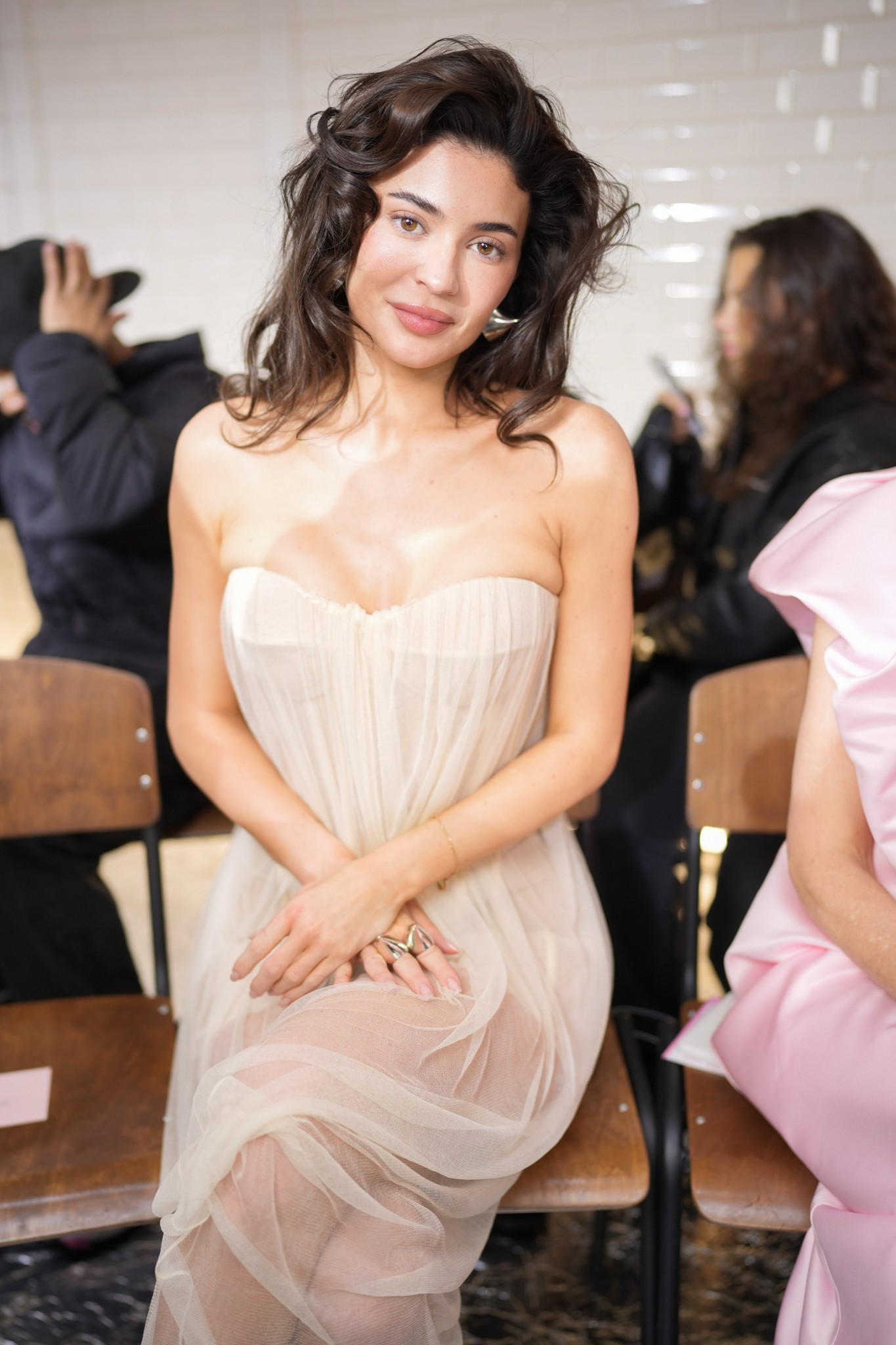The internet is buzzing with questions like “Why does Gen Z look older than Millennials?” and “Why is Gen Z aging faster?” Google Trends data reveals these were top trending searches related to these generations in the past year. Gen Z typically ranges from 11 to 26 years old, while Millennials are between 27 and 42.
This discussion exploded on TikTok in January with a viral video by 26-year-old Jordan Howlett, amassing over 24 million views. Howlett attributed the perceived age difference to stress, highlighting a common sentiment: Millennials appear younger than their age, while Gen Z looks older.
 Kylie Jenner at Jean Paul Gaultier spring 2024 couture.
Kylie Jenner at Jean Paul Gaultier spring 2024 couture.
Kylie Jenner at Jean Paul Gaultier spring 2024 couture. Stephane Feugere/WWD
The Role of Stress in Accelerated Aging
Stress might indeed contribute to Gen Z’s perceived faster aging. Research, including DNA analysis and subjective observations, distinguishes between chronological age (years lived) and biological age (body’s condition influenced by health and lifestyle). Factors like smoking, genetics, diet, mental health, and chronic stress can contribute to looking older.
Social Media and Mental Well-being
“Stress is an underrated aspect of aging, often accepted as a badge of honor, especially in America,” says Emily Trampetti, aesthetician and founder of Skin Property. “Chronic stress, particularly related to mental health, can age us rapidly.”
A 2022 McKinsey Health Institute survey revealed 32% of Gen Z reported poor mental, social, and spiritual health compared to 23% of Millennials. 27% of Gen Z cited social media as a contributing factor. While Millennials spend more time on social media, Gen Z engages more passively (scrolling), potentially impacting mental health. A 2015 Journal of Experimental Psychology study linked passive social media use to decreased emotional well-being.
Retinoid Use and Premature Aging Concerns
Beyond stress, some Gen Z individuals believe retinoid use accelerates premature aging, citing increased fine lines.
“Using retinol for anti-aging in younger years offers limited value,” explains Dr. Marisa Garshick, a board-certified dermatologist. “Younger individuals typically have healthy skin.”
Retinoids, vitamin A derivatives, effectively treat acne, blemishes, and scarring. Dr. Garshick emphasizes their primary use for acne treatment in this demographic, not anti-aging. “Retinoids can be drying, irritating, and disruptive to the skin barrier, potentially causing unnecessary irritation.”
Millennials and the Rise of Injectables
While Gen Z might experience temporary side effects from retinoids, they aren’t necessarily aging faster. Millennials, however, might appear younger due to the widespread adoption of injectables. Online searches for “Why do Millennials look so young” surged 1,140% in the past year.
“Millennials look good due to their embrace of injectables,” notes Dr. Dan Belkin, a board-certified dermatologist.
Injectable Trends Across Generations
Injectable treatments are increasingly popular across all ages for anti-aging, with Millennials leading the growth. The American Society of Plastic Surgery’s 2023 study found a 9% increase in hyaluronic acid (HA) fillers among Millennials, the highest across age groups. HA fillers like Juvederm, Voluma, and Restylane add volume to lips, cheeks, and under-eye areas, lasting 6-18 months and being dissolvable.
Millennials also showed increased use of semi-permanent, non-dissolvable fillers like Radiesse, Sculptra, and Bellafill (up 8% from 2022). Neuromodulators like Botox, Dysport, and Xeomin, smoothing wrinkles and fine lines, remain the most popular injectables overall.
“Aging seems to accelerate in the mid-to-late 30s,” observes Dr. Belkin. “People start noticing changes in their appearance, feeling they look tired and unlike themselves.”
Fillers: Potential for Overfilling in Gen Z
While fillers can make Millennials look younger, they might have the opposite effect on Gen Z, potentially leading to an overfilled, older appearance. “Filler is a powerful tool requiring careful and intelligent use,” cautions Dr. Belkin. “Migration can create an exhausted look, making one appear older.”
He recommends fillers for enhancements in Gen Z, not volume replacement, as they generally lack significant skin laxity. Appropriate uses include subtle cheek or lip enhancements, or chin definition.
The Case of Kylie Jenner and Filler Migration
Kylie Jenner’s appearance at the Jean Paul Gaultier spring 2024 couture show sparked widespread social media discussion about potential filler migration contributing to an older look. The @doctor.devine TikTok account described it as atypical aging for her age, indicating overfilled tear trough filler. The video garnered over 3.5 million views, and “Kylie Jenner filler” searches spiked.
“Overfilling creates an uncanny look unexpected for a particular age range,” explains Dr. Devine. “Kylie’s puffy under-eyes resembled age-related changes like festooning, caused by skin laxity, which is unusual for someone in their 20s.”
Neuromodulators and the “Baby Botox” Trend
While less common in Gen Z, neuromodulator use is growing (up 8% from 2022), with nearly 140,000 procedures last year. The ASPS study highlights the rising popularity of “Baby Botox” for preemptive wrinkle prevention. However, overuse can create an aged appearance.
“Xeomin provides more conservative results, maintaining natural movement while reducing or preventing lines,” says Dr. Belkin. “It offers a natural appearance, preferred by actors and public figures.”
Xeomin, effective for moderate to severe frown lines, launched its “Beauty on Your Terms” campaign in 2022 with ambassadors like Demi Lovato and Joe Jonas to engage a younger audience. Dr. Belkin explains that Xeomin minimizes the risk of an overly heavy or “Spocked” brow, which can make someone look older. A frozen or dropped glabella (area between eyebrows) can also age a person prematurely. While an experienced eye might recognize over-Botoxed features, the average person might simply perceive the individual as older than their actual age.